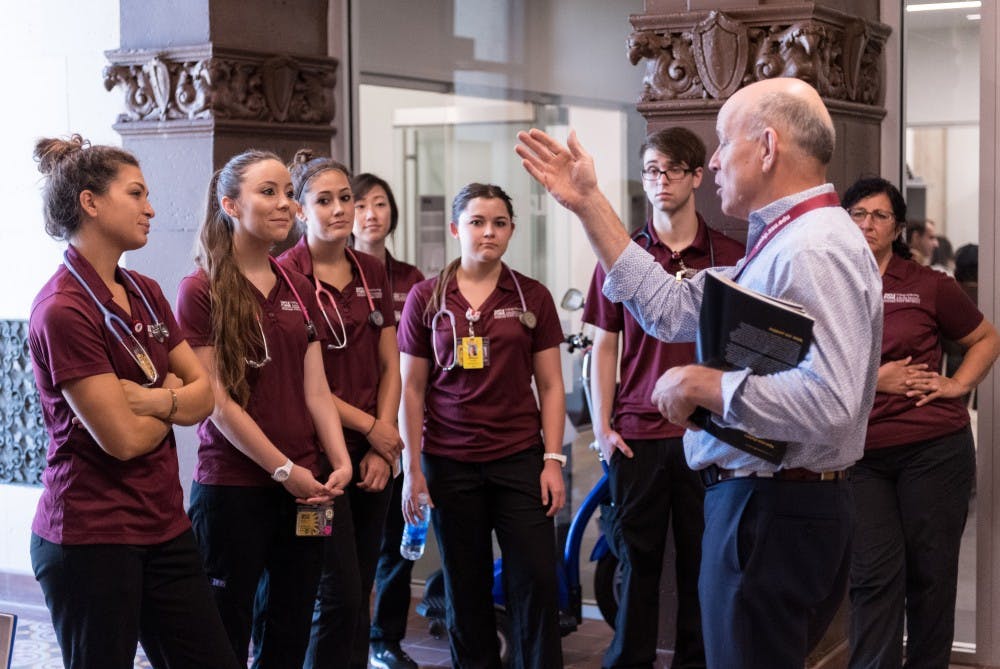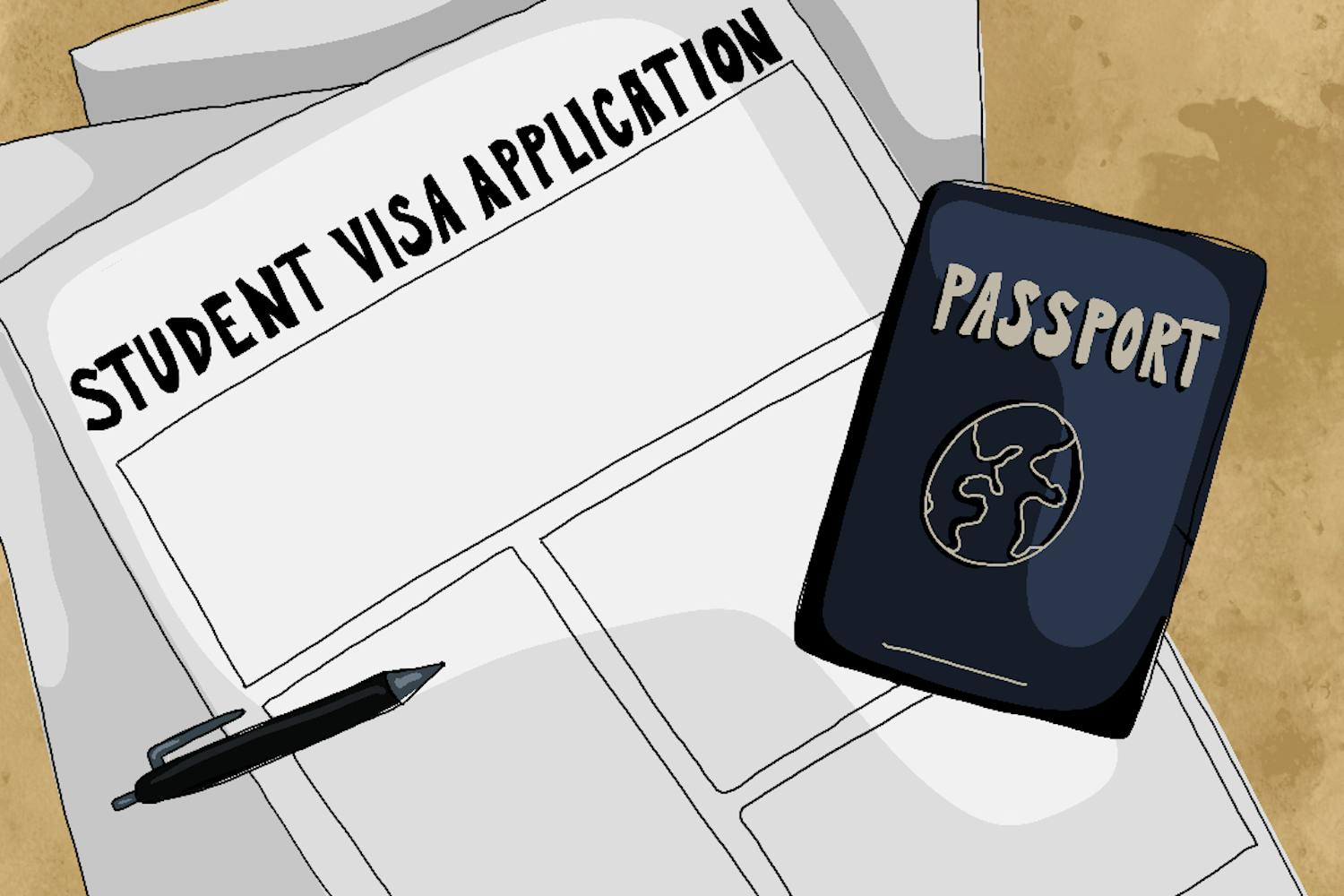In downtown Phoenix's historic Westward Ho, ASU students are taking the opportunity to apply their skills from the classroom in a collaborative setting while making a positive impact in the community.
In late August, ASU opened Collaboratory on Central in the building to provide medical and psychological aid to its often elderly, disabled or low-income residents — all while providing students with hands-on experience.
Nursing, nutrition, social work and recreational therapy students can participate in internships at the Collaboratory, where they are working together to create programs to support, educate and otherwise improve the quality of life for Westward Ho's tenants.
“This is community embeddedness at its finest,” said Michael Shafer, director of the Center for Applied Behavioral Policy and creator of the Collaboratory. “We have as much to benefit from our students learning from the tenants and learning from the people who run that property, as the tenants have to benefit from us being there.”
Although the program is not currently funded, Shafer said each of the colleges involved in the Collaboratory are contributing the funds to support it while they search for donors and grants.
As a part of the program, ASU is leasing 15,000 square feet on bottom floor of the historic building. For now, the lease and other supplies are being paid for with the college's funding.
Previously, the Westward Ho was home to a smaller program called the Student Nursing Clinic; however, with the new space, the program has expanded to include nutrition, social work and recreation therapy students.
The Collaboratory's nursing students offer nutritional guidance, blood pressure checks, disease prevention and other health services. With the addition of students from other majors, the program is able to be more accommodating to both the medical and psychological needs of the residents.
With this new approach, the interns are better equipped to develop a comprehensive plan that will accommodate the more complex needs of tenants, including things that cannot be resolved by medical care alone.
Interns are developing program components that provide tenants with educational enrichment, health and wellness information and community resources. An underlying goal is to develop a sense of community among tenants.
“Each of those disciplines feels that it’s important that students have some real-world learning opportunity, and we have a real need literally across the street from us that makes it easy for students to get the kind of experiences they need,” Shafer said.
ASU conducted a survey of 50 Westward Ho tenants in 2013 and discovered that many of their social and psychological needs were not being met, Shafer said.
“We know that if people are active in their social life and their recreational life, they’re going to be a lot healthier physically, and they’re going to be a lot healthier mentally and emotionally,” Shafer said.
Cindy Vang is a doctoral student and the social work field instructor at the Collaboratory.
“The purpose is for us to really collaborate with one another depending on the needs and the wants of the tenants here,” Vang said. “It really shifts the focus and the purpose of us being here.”
Although collaboration is a key aspect of the program, she said, each discipline has a set agenda to learn skills specific to that area.
Interns help residents with things like finding community services, and organize group activities such as chair yoga and community art projects, Vang said, although many activities are tailored to the tenants’ wants.
Tenants are also provided with services such as counseling, vitals checks, nutrition information, disease prevention and health monitoring.
“Right now, some of (the tenants) are expressing loneliness and a lack of a sense of community, so I’m hoping that through the activities and groups that we run here, and the supportive counseling that we do provide, that eventually, it starts to build a community among the tenants here,” Vang said.
Although it is too soon to see much progress, Vang said, the tenants have shown receptiveness to the new program.
“There is a lot of benefit to the Collaboratory being here for ASU students because they get the chance to have hands-on experience, and they call that experiential learning, really with individuals that they could possibly be working with when they go out into the job force,” she said.
Tama Reily, a social work graduate student, has been working with Shafer on the development of the program since last spring, she said.
Reily said Westward Ho tenants have a high usage of 911 and emergency services, which the Collaboratory hopes to remedy by providing more personal information and support.
Continuing education and providing cultural enrichment is another major goal of the program, Reily said.
The Collaboratory team hopes to implement things like financial literacy classes, educational seminars, lectures and recitals for the tenants, she said.
“It’s certainly improved the ability of the students to work together,” Reily said of the new office space. “It was hard for there to be a whole lot of collaboration because it was difficult for them to be in the same space.”
Reily compared the program’s collaborative approach to the newest teaching methods in medical schools — where doctors and nurses are trained together. She explained that it is often helpful to see how other disciplines might approach the same problem.
“It’s more informed," she said. "It’s an integrated realization.”
The program is supposed to be practical, especially for students who will likely go on to work collaboratively in a professional setting, Reilly said.
“There’s a wonderful dynamic that’s happening,” Reily said. “It’s allowed the program to blossom.”
Reach the reporter at ekamezak@asu.edu or follow her on Twitter @emikamezaki
Like The State Press on Facebook and follow @statepress on Twitter.




